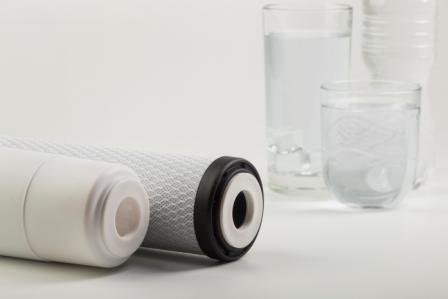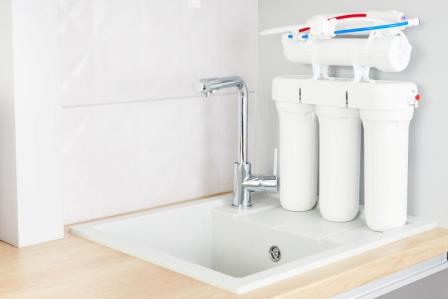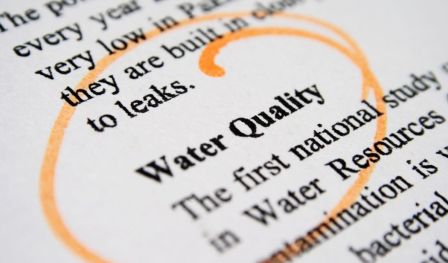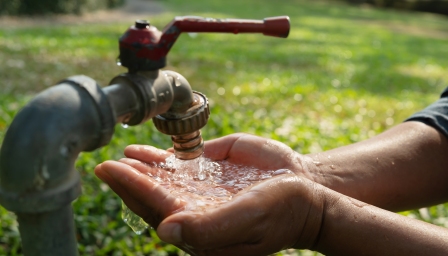According to the WHO, 785 million people do not have access to safe drinking water. Clean water is the necessity of every individual, but most of the planet’s water resources are contaminated.
As a result, selecting the right water purifier or filter is very important to ensure that you get quality water for drinking.
However, you may get confused with the difference between both the terms- purifier and filter. Luckily, we are here to assist you! We’ll explain the differences between a water filter and a water purifier in this article so you can figure out which one is right for you.
What Is A Water Filter?

Water filters are designed to remove the solid and biological impurities from the water. Their porous nature can retain dust and bacterial cells.
However, they can’t remove any chemical impurities. Also, certain bacteria and pathogens as well as chemicals, due to their smaller size, can easily pass through the filter. Water filters are of various sizes and types, such as gravity-based water filters, pump water filters, and electric water filters, etc.
Methods Of Filtration
The following are some common methods used by water filters to eliminate the impurities:
1. Carbon Block Filtration
In this method, carbon chemically bonds with the water that passes through it and removes the impurities. Some examples of these impurities are chlorine, lead, mercury, etc.
2. Mechanical Filtration
In this method, the water passes through a cartridge or mesh filter that traps solid particles on the surface. As a result, impurities such as wilt, clay, sand clay, and organic matter are removed from the water.
3. UV Filtration
In this method, UV radiation penetrates the cells of the disease-causing bacteria and viruses in the water. It destroys their reproductive potential. UV water filters can eliminate 99.9% of germs. However, their bodies remain in the water.
What Is A Water Purifier?

Water purifiers have a membrane with smaller pores. As a result, they can trap even some of the dissolved gases, chemicals, bacteria, viruses, and fungi, etc.
They also come with advanced technologies and as a result, they can enhance the texture, color, taste, and smell of water along with removing the impurities. There are different types of water purifiers, such as RO, UV, and UF water purifiers, etc.
Methods Of Purification
The following are some of the methods used by water purifiers to remove the impurities:
1. Reverse Osmosis
In reverse osmosis, the water is passed by high pressure through a semi-permeable membrane. The size of its pores is very small (0.0001 microns). Thus, only the water molecules can pass through this membrane and 90% of the impurities get removed. An RO purifier is considered the best water purifier in India.
2. Distillation
In this method, the impurities are removed from water through evaporation. Firstly, the water is brought to a boiling point. After this, it is left for vaporizing. After this, the vapor is directed into a condenser for cooling down.
When this vapor cools, it condenses into pure water. Other chemicals with a higher boiling point are left in the container as sediments. Many pollutants, including bacteria, sediments, and organic chemicals, can be effectively removed from drinking water using distillation.
3. Deionization
Deionization is a method in which all the ions of the water are removed. Because the majority of non-particulate water pollutants are dissolved salts, deionization provides pure water, which has a very low mineral content.
The Difference Between Water Filter And Water Purifier
The following points will help you to know the main differences between water filters and purifiers:
1. Contaminants Removed
Usually, water filters are designed to remove the solid, larger impurities like dust, clay, sand, etc., and some biological contaminants like bacteria and viruses found in water.
Whereas, water purifiers can successfully eliminate even the harder-to-detect contaminants such as dissolved solids (chlorine, fluoride, arsenic, sulfates, etc.), pesticides, and other harsh chemicals, viruses, bacteria, etc., from the water.
2. Levels Of Purification
Most water filters use 2-3 layers of filtration to clean the water. These filters are adjusted one after the other and they remove a particular type of contaminant when water passes through them.
On the other hand, water purifiers have multiple stages of purification. Along with removing the impurities, they can also improve the color, taste, and smell of water, making it completely fit for drinking.
3. Additional Features
Most water filters come with basic features. They require more manual intervention. For instance, a non-electric water filter needs to be filled with water at regular intervals to provide clean water.
While most water purifiers come with advanced features and require minimal manual interventions. For example, they have smart warning systems that tell you when to replace filters, show water purity levels, and indicate when their tank is full, etc.
But Which One Is The Best For Me?
If you’re still not sure whether you should go for a water purifier or filter, consider these 2 things:
1. The TDS Level Or Water Quality

TDS stands for Total Dissolved Solids level of your water. You need to get your water tested with the help of a professional to know its TDS level. For moderate to low (150-300 mg/L) TDS levels, you can opt for a water filter.
However, if the TDS of your water is high (600 mg/L and above), then a water purifier will the best option for you since it can remove almost all the dissolved solids from the water.
2. The Source Of Drinking Water

You have to take into account the source of your drinking water.
- If your water source is borewells or tankers, it likely has a high amount of salts, impurities, lead, and other harmful chemicals. In this case, you require a water purifier to treat these impurities.
- If the Municipal Corporation supplies water to your home, its source is lakes or ponds, most likely. Usually, water from these sources has a low TDS level. Therefore, a water filter will be enough to purity it.
Moreover, the water supplied by municipal corporations is most likely to be treated with chlorine. Therefore, we recommend you go for a filter (Ro or UV) to reduce the chlorine levels.
FAQs
1. Why is the appearance of my filtered water cloudy?
Filtered water may appear cloudy due to the presence of tiny air bubbles inside it, which will settle after some time. But you don’t have to worry about it since it is completely safe for drinking.
2. Do I need to keep the water purifier turned on at all times?
It is a good idea not to turn off your water purifier, even at night. This is because water purifiers are designed to function continuously, and if you turn them off unnecessarily, their parts can get damaged.
You May Also Like To Read:
How To Buy The Right Water Purifier?
When To Change RO Membrane And Filters?
Conclusion
Now that you’re familiar with the difference between a water filter and a purifier, we hope shopping for one would be much easier for you!
Remember, while filters can remove solid pollutants and bacteria from your water, they can’t eliminate the harsh chemicals from it. Water purifiers, on the other hand, can effectively remove those chemicals, as well as other contaminants, from your water.
If you have any other questions, please type them comment section below. We will be happy to help you!


